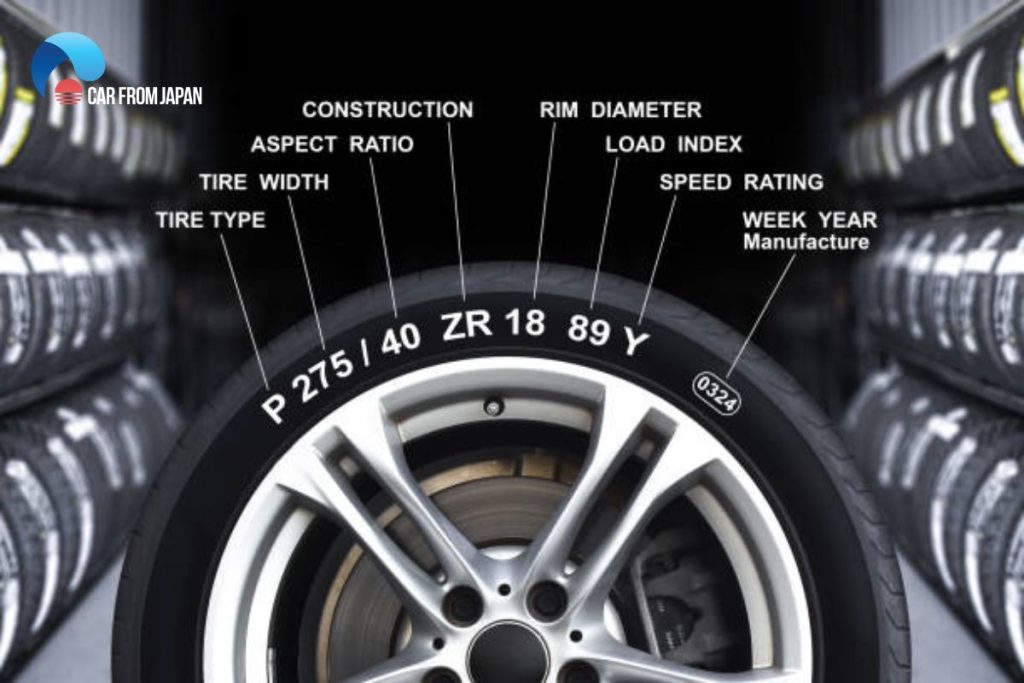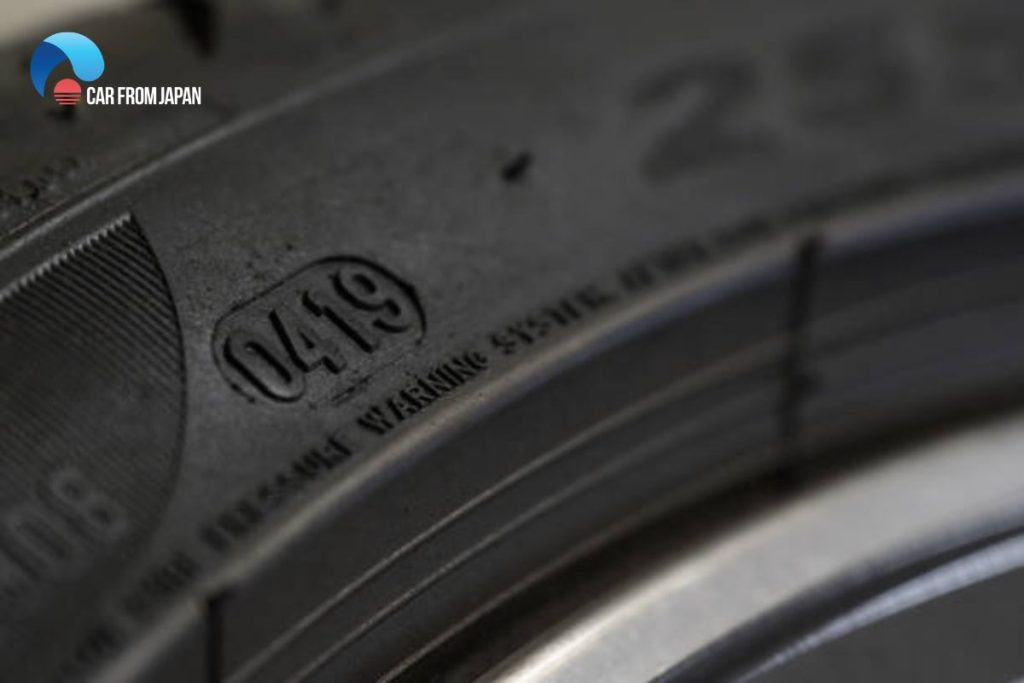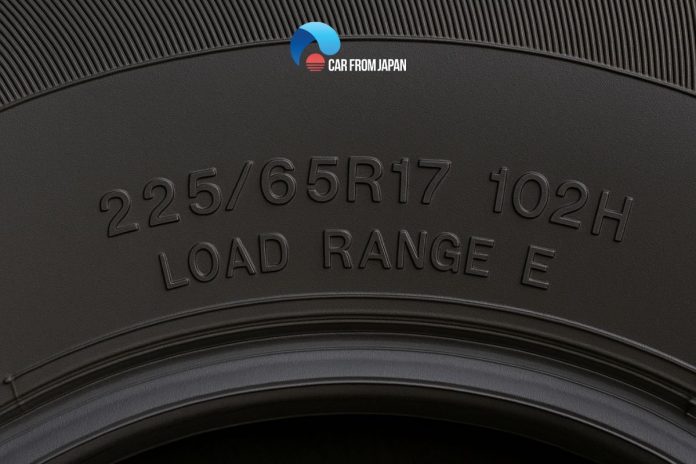If you notice on the sidewalls of car tires, in addition to parameters such as brand, product line, size, and year of manufacture. There is another symbol that many of you may wonder about, for example, 91W, E. It is the tires load index vs load range, respectively. So, what do each of these symbols mean?
Knowing these parameters, you will see a significant increase in the lifespan of the tires you use every day. And this is also a non-random detail that manufacturers want you to know.
Using suitable tires is very important, affecting the performance and safety of your vehicle. Choosing tires should match the conditions of use of the car. You should understand the standard tire size for your car so that you can choose the right tire.
What is The Tires Load Index vs Load Range?
Things you need to know about tire load index
The tire’s load index indicates the load capacity of the tire. The higher the value, the heavier load your tires can handle. Drivers should note, never replace the original tire with a maximum allowable load index lower than this parameter. Only using tires has the same or higher load.
This will ensure that the tires can withstand the maximum load of cars when driving. For example, if a tire has a load rating of 92. It can support 1,389 pounds at maximum air pressure. Multiply that by four tires (4 x 1,389 = 5,556 pounds) to get the car’s maximum load capacity. You can find the load capacity of some tires in the chart below.

Tire load rating chart
| Load index (LD) | Load (lbs) | LD | (lbs) | LD | (lbs) |
| 61 | 567 | 89 | 1279 | 117 | 2833 |
| 62 | 584 | 90 | 1323 | 118 | 2910 |
| 63 | 600 | 91 | 1356 | 119 | 2998 |
| 64 | 617 | 92 | 1389 | 120 | 3086 |
| 65 | 639 | 93 | 1433 | 121 | 3197 |
| 66 | 661 | 94 | 1477 | 122 | 3307 |
| 67 | 677 | 95 | 1521 | 123 | 3417 |
| 68 | 694 | 96 | 1565 | 124 | 3527 |
| 69 | 716 | 97 | 1609 | 125 | 3638 |
| 70 | 739 | 98 | 1653 | 126 | 3748 |
| 71 | 761 | 99 | 1709 | 127 | 3858 |
| 72 | 783 | 100 | 1764 | 128 | 3968 |
| 73 | 805 | 101 | 1819 | 129 | 4079 |
| 74 | 827 | 102 | 1874 | 130 | 4189 |
| 75 | 853 | 103 | 1929 | 131 | 4299 |
| 76 | 882 | 104 | 1984 | 132 | 4409 |
| 77 | 908 | 105 | 2039 | 134 | 4674 |
| 78 | 937 | 106 | 2094 | 135 | 4806 |
| 79 | 963 | 107 | 2149 | 138 | 5203 |
| 80 | 992 | 108 | 2205 | 142 | 5842 |
| 81 | 1019 | 109 | 2271 | 143 | 6008 |
| 82 | 1047 | 110 | 2337 | 144 | 6173 |
| 83 | 1074 | 111 | 2403 | 145 | 6393 |
| 84 | 1102 | 112 | 2469 | 146 | 6614 |
| 85 | 1135 | 113 | 2535 | 147 | 6779 |
| 86 | 1168 | 114 | 2601 | 148 | 6944 |
| 87 | 1201 | 115 | 2679 | 149 | 7165 |
| 88 | 1235 | 116 | 2756 | 150 | 7385 |
It will be printed on genuine tires. Making it easier for drivers to choose and buy tires according to their actual needs. Drivers must pay attention to this indicator so that the car can operate at its best. Avoiding tire explosions when the vehicle is driving long distances.
Learn about Tires Load Range (Ply Rating)
If you are learning about tires or are interested in replacing tire sizes from one type of tire to another. It is important to understand the load range, what it means, and how to identify it. So that you can install the correct tires for your car.
Tire load range, which you can call “ply rating,” includes different ply layers. The more layers, the better and stronger the tire is. So manufacturers will calculate the plies of a tire. And use this number to represent load-carrying capacity. Today, the ply rating still indicates a tire’s durability. But because fewer, stronger layers are used, the numbers have been replaced with letters for the load range.
For example, Load Range E indicates that the tire is equivalent to a 10-layer construction tire. Tires are not made of ten layers, but two or four layers of equal strength. The load range mounted on the sidewall indicates how much load the tire is designed to carry (at a particular pressure). And gauges the amount of air the tire can hold.
Whether you’re owning a regular passenger car or a light truck. Each one gets specially built tires to hold the weight of your car. Each tire comes with its load range. Light truck tires typically come in a load range B, C, D, E, or F -all with different class ratings. Respectively – 4 plies, 6 plies, 8 plies, 10 plies, or 12-ply, respectively.
Note: Letter “P” stands for “Passenger”, which is a tire for passenger vehicles. Including passenger cars, minivans, SUVs, and other pickup trucks. If you see the letter LT (Light Truck) or T (Temporary), it means a light truck tire or a spare tire, respectively.
Load range is denoted as the different letters from A – N, with the absence of I and K to avoid confusion with the digit 1 and a Kilogram (Kilo) respectively.

Tire load range chart
| Load range | Ply rating | Maximum air pressure |
| B | 4 | 30 PSI |
| C | 6 | 50 PSI |
| D | 8 | 65 PSI |
| E | 10 | 80 PSI |
| F | 12 | 95 PSI |
| G | 14 | |
| H | 16 | |
| J | 18 | |
| L | 20 | |
| M | 20 | |
| N | 24 |
Load ranges for the light truck have the letters B, C, D, E, and F. They have increased maximum pressure. The lowest pressure is 35 psi for B and C, and 50 psi. Pressure increases to 15 from 65 psi, 80 psi, and 95 psi for tires with load ranges D, E, and F.
FAQs
What is the tire speed rating?
Speed rating represents the maximum speed at which the tire can load a certain weight (determined by the load index) under the conditions specified by the manufacturer. The speed index is denoted by letters. Each letter corresponds to a specific speed and increases when going from A to Z. Respectively, 5km / h to more than 300km / h.
For example, a tire with a tire speed rating: “S” will withstand speeds up to 112 mph. A tire with an “R” rating will withstand speeds up to 106 mph. Note that this is not the recommended driving speed. You should follow the allowed maximum speed limit on the road.
Tires with a high-speed rating will improve car performance. The spare tire must have a speed rating equal to or higher than the current tire in order to maintain vehicle speed. You’ll find the speed rating on the sidewalls, at the end of the tire size numbers. The speed indicator is always a letter and is usually placed right next to a number. So you can easily find it.
Load range D or E will be better for your tire?
Load rating indicates how much weight each tire can handle. D is rated for 8 plies with a maximum psi of 65, and an E of 10 plies with a maximum pressure of 80 psi. As mentioned above, E is better for towing as you can fill the tire with more air pressure.
Do tires with a higher load rating help the car ride more smoothly on rough roads?
The answer is “Not necessary”. As you know, load indicates relates to the pressure capacity of the tire. And thereby its load-carrying capacity. Smoother tires are the result of many factors. Among them are the tread design, compound, sidewall flexibility, as well as static and dynamic uniformity.
What will happen when you overload your tires?
You may notice that the sidewall indentation is visually present at the bottom of the tire. The tire will look similar to an uninflated tire. If you continue to drive with an overloaded tire. Premature tire wear is bound to occur. In the worst case, you could have an exploded tire. A blowout can lead to additional damage to your car (such as a damaged fender well liner, fender flare…)
To avoid this, you can take advantage of a number of safety devices that can be fitted to the tires and monitor the tire pressure in real-time. Using the chart provided by the tire supplier. You can know if your tire is overloaded and take appropriate action.
Tire temperature rating
The temperature index will measure the temperature resistance of tires. When driving over long distances at high speed, tire tension or overload. This parameter also uses letters: A, B, and C to indicate the temperature endurance of the tire. The A-rated tires will be able to stay cool while in motion.
Final Words.
When changing car tires, users are often only interested in tire size, manufacturer, and price. But they are less concerned with whether the specifications are suitable for use. Therefore, there have been many tire-related incidents, such as tire explosions. When running at high speed, the tires are too noisy.
Hopefully, the topic “tire load index vs load range” will help you understand the meaning of car tire parameters. And find the most suitable tire for your car. Making the most of the tire’s performance. A car tire with the right structure for your car helps you to be safer on all your journeys.



